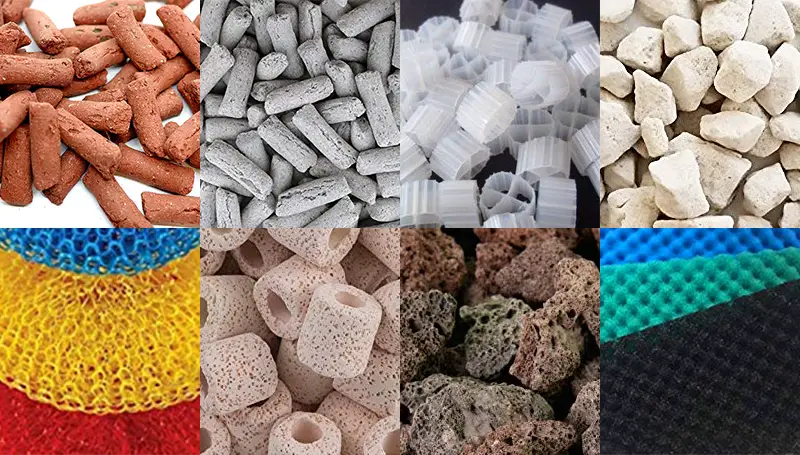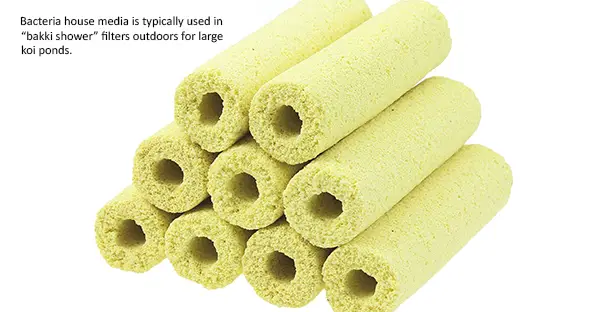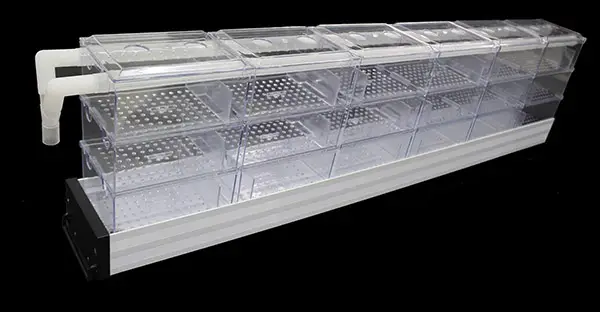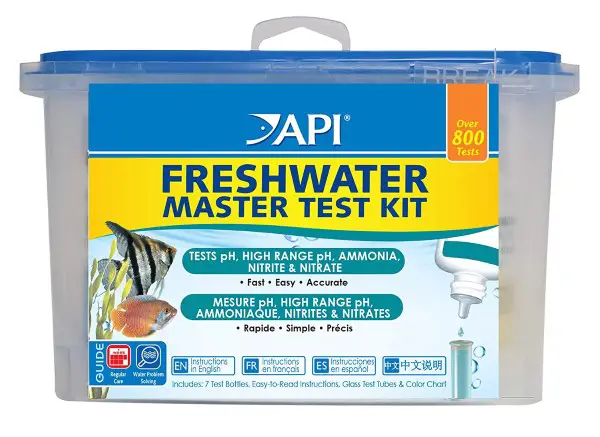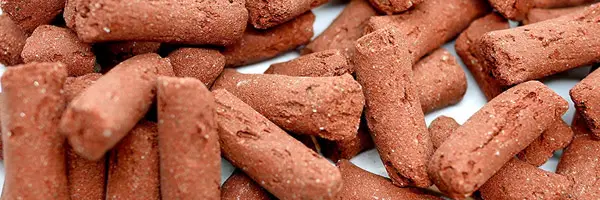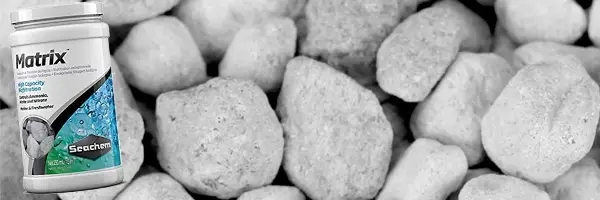Best aquarium filter media—it’s a bold and, honestly, seductive claim. Whether you’re new to the fishkeeping hobby, or maybe you’ve been around the block once or twice, who can resist wanting to know and use the best filter media?
Well, unfortunately it’s not that simple, because there is no filter media that is the best in all scenarios. While it might not be that simple, it’s also not that complicated either. So, in this article I want to cover all my bases—i.e. I’m going to start by laying down the basics of filtration, answer some FAQs, and talk about different types of filters before I even get into the filter media itself. But, if you’re just here for the meat and potatoes of how different filter media performs, by all means skip past the groundwork about aquarium filtration and different types of aquarium filter!
When all’s said and done, and you’ve finished reading this article you’ll have a solid understanding of aquarium filtration and know exactly which filter media is best for your fish tank!
How Does Aquarium Filtration Work?
Simply put, the aquarium filter passes water over the filter media.
The filter media, when mature, houses a colony of bacteria. That bacteria consumes ammonia and nitrite, and produces nitrate. Fish produce ammonia. Having high nitrates in your fish tank isn’t ideal, but nitrate is nowhere near as damaging to your fish as ammonia and nitrite.
After a period of time (which varies on your stocking levels) you must change out the water in your aquarium in order to lower or eliminate the nitrates in your water.
If you’ve ever wondered why your fish don’t grow much, it could be that you’re not changing the water enough and an excess of nitrates are causing them to be stunted.
What About Mechanical, Biological, And Chemical Filtration?
Mechanical filtration is intended to trap detritus for two reasons. Firstly, it prevents mulm from clogging your biological filter media (more on that later). Secondly, it prevents the unsightly detritus (poop, decaying plant matter, uneaten food, etc) from returning to the aquarium.
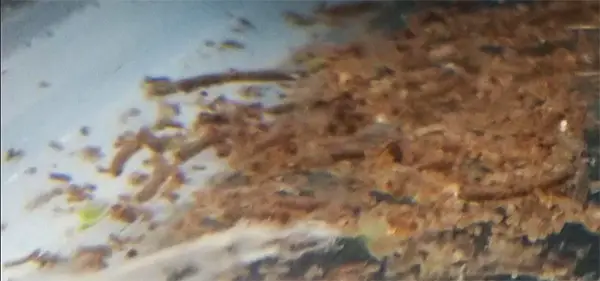
Biological filter media is intended to be the primary home for beneficial bacteria. I say primary home, because beneficial bacteria will colonize any surface in your aquarium—the glass, the substrate, decorations… everything! And that includes your mechanical filter media too!
So, you might be wondering: why do I need biological filter media if the beneficial bacteria is capable of living anywhere and everywhere? Well, for two reasons.
First of all, because biological filter media is designed to have a massive surface area. The large surface area provides the base for an unnaturally large colony of beneficial bacteria.

Secondly, your filter should drive water over its media. Therefore, the biological filter media is constantly coming into contact with “new” aquarium water. That aquarium water is loaded with ammonia and nitrites for the bacteria to gobble up and turn into nitrates.
And what about chemical filtration? Well, personally, I don’t do a lot of chemical filtration because in an ideal scenario I don’t need to do it.
This is because chemical filtration, in its most common form, uses activated carbon to bind with any nasty chemicals in the water. So, for example, chemical filter media can be used to bind ammonia into a different chemical compound. And while that’s fine, it’s not a long-term solution as chemical filter media must be either recharged or replaced, whereas a healthy colony of bacteria is reliable and sustainable solution for ammonia and nitrate in your aquarium. So, generally, I only recommend chemical filtration in a few, very uncommon situations.
Is Surface Area Always King?
So the more surface area a filter media has, the better it is? Yes and no. In an ideal world, yes. In a practical world, possibly not.
Very porous filter media will usually have lots and lots of very small holes in it. Unfortunately, those holes can, over time, become clogged with detritus. The smaller they are, the more often and more quickly they can become clogged.
Clogged biological filter media is bad because it prevents water from reaching bacteria as easily. Also, it can result in your bacteria colony partially “crashing” (i.e. dying).

Therefore, if you use very porous filter media, you might find that time between maintenance is reduced.
However, I’m by no means advising against extremely porous filter media, I’m just explaining the reality of using it. While it can be frustrating to deal with clogged bio media, remember that correct use of mechanical filtration (capturing detritus prior to biological media) can avert most issues.
While there are no hard and fast rules, overall, the higher the surface area, the better the filter media.
Moving Bed / Fluidized Bed Biological Media
Moving bed filter media breaks the rules! That is because it has a comparatively small surface area, while at the same time being a highly effective biological filter media.
How does that work you might ask? Well, it’s because moving bed media—K1 being the most common—has neutral buoyancy when coated in bacteria. Consequently, a stream of air bubbles can be used to cause the K1 media pieces to move around and bang into each other. As a result of those collisions, unhealthy and weak bacteria is killed and knocked off the media, leaving only the most vigorous bacteria behind. Therefore, it makes for an incredibly robust community of beneficial bacteria.
Do I Need To Match My Aquarium Filter Media To My Filter Type?
Yes, you should consider what type of filter you’re using when deciding which filter media to use with it.
For example, too much mulm and detritus can clog and break cheap filter motors and impellers. In that scenario, you should be using enough to mechanical filtration to save the impeller from the nightmare of a poop clog!
Speaking of mechanical filtration, sometimes too much mechanical filtration can be a bad thing! If your filter has an over-sized pump, particularly if the flow rate is very strong, then this can cause a fine mechanical filter foam to become clogged within a matter of minutes!
What Type Of Filters Are There?
There are a lot of different types of aquarium filters. And to know what the best filter media is for you, you also need to know a bit about the different types of aquarium filters.

Similar to filter media though, no one type of filter is the best for all scenarios and all people. In my experience, every type of filter I’ve ever used has worked. Specifically, they’ve all been able to house beneficial bacteria and convert ammonia to nitrite and nitrite to nitrate.
The only case where some filters “don’t work” is, perhaps, mechanically. For example, a sponge filter isn’t going to suck up your 12 inch oscar’s giant poops—you’re gonna need a power filter of some kind for that (HOB, canister, etc).
Sponge Filters
A sponge filter is one of, if not the, simplest type of aquarium filter available. It’s merely an uplift tube with a sponge (foam) around it. But, because it is so simple and has no moving parts of its own, you will need an air pump to drive it. With an air line attached to the uplift tube, it creates a weak current that pulls the aquarium water through the sponge where beneficial bacteria are able to process that nasty ammonia into nitrite, and ultimately, nitrate.

Sponge filters are pretty popular with fish breeders because the gentle current means that any fry won’t be sucked into a powerful filter. They’re also popular aquarium hobbyists in possession of extensive fish rooms with lots of aquariums. This is because they are relatively cheap, easy to clean, have no moving parts (i.e. they don’t break down), and a large number of sponge filters can all run off one, central, powerful air pump.
So what’s the best filter media for a sponge filter? Well, that’s not really the question to ask because a sponge filter itself pretty much is the filter media. No sponge, no filter. However, some sponges have higher surface areas than others. But, in my experience, any kind of sponge attached to an air pump is enough to keep ammonia in check.
Ultimately, when it comes to sponge filters, the best thing I can do is recommend my own personal favorite brand: Bacto-Surge by Hikari (affiliate link).
Box Filters
I won’t say too much about box filters because over the last 20 years they’ve really fallen out of favor in the West. However, they are still quite popular in Japan.
A box filter is similar to a sponge filter in that it has no moving parts of its own, and depends on an independent air pump to drive movement of water over the filter media.
The key difference is that a box filter has a transparent plastic box inside which a filter media of your own choice can be placed. So, this means you do have to make a choice with this one: what is the best filter media for your box filter! Personally, I would use some filter floss for mechanical filtration, followed by something small and with a large surface area for biological filtration.
Hang On Back Filters
HOB (hang on back) filters are hugely popular, and with good reason. Simply put, they’re great filters for the average aquarium owner with maybe one tank in their living room or office. They’re good because they’re power filters, i.e. they have their own motor/impeller, and because they hang on the back of the aquarium they’re easy to take care of. And, generally, they’re cheaper than a good canister filter.
However, HOB filters often come with (in my opinion) less than ideal information from the manufacturer. This is in regards to the filter’s “cartridges” which the manufacturer typically suggests you throw away and buy more of on a regular basis! Which, if you’ve followed along with this article so far, is total nonsense. When you throw that cartridge away, you’re also throwing away your vitally important bacteria colony!!!
It’s much better to simply take the cartridges out, rinse them off in dechlorinated water (e.g. tank waste water when you’re doing a water change) and then just re-use the cartridge until it’s totally falling apart.
Are those filter cartridges the best filter media for your hang on the back filter? Eh, they’re not bad at all—remember, beneficial bacteria will grow just about anywhere. However, most HOB filters have some open space behind the cartridges where you can slot in some extra filter media. For that space, I’d recommend a nice, easy to clean biological media with (you guessed it) as high of a surface area as possible.
Canister Filters
This is probably the type of filter you own if you’re wondering what the best aquarium filter media is. Because, after all, canister filters are typically nothing but large, sealed filter media compartments with a pump attached to push the water through.
In fact, a lot of canister filters don’t even ship from the manufacturer with any pre-installed filter media. Which, isn’t necessarily a bad thing, because at least it gets you thinking about how you want to configure your filter and which filter media you want to use.
Because you can’t see into a canister filter, media clogging and how often you want to do maintenance should be among your concerns. Depending on how messy your fish are, you’ll want to use a series of foams increasing in density in order to mechanically filter out the majority of the gunk prior to the biological media.
Simply put, use coarse, medium and then fine foam pads in that order. That way your filter will incrementally capture large, medium, and then fine detritus. After that pick out a biological filter media with, you guessed it, as large a surface area as possible!
(I’ll get into specifics about types and brands of biological filter media further along in the article!)
The Ziss Filter!
The Ziss filter is a relatively new addition to the aquarium filter bunch.
It’s an air driven filter. So, just like a sponge or box filter, you’ll need an independent air pump to drive the filter. But what makes the Ziss filter special is that it combines a box, a sponge, and a moving bed filter all in one!
The sponge is inserted near the filter’s inlets, at the bottom of the box (I say “box”, but it’s actually round). Therefore, the sponge is able to grab the detritus from the water before it moves into second compartment. Moving (a.k.a. “fluidized”, a.k.a. “moving bed”) filter media is stored in the next section of the filter. This is where the vigorous beneficial bacteria will be thriving, allowing for a fast and efficient conversion of ammonia into nitrite, and then nitrate.
You don’t really need to worry what the best filter media is for a Ziss filter because it comes pre-equipped with its sponge and its moving bed media. Although, I suppose you could swap out the sponge for a different one if you felt the need. However, I wouldn’t think it would be necessary in many cases.
Matten / Corner Filters
A matten filter is similar to a sponge filter in that it has no moving parts of its own. Therefore, like box filters and like sponge filters, a matten filter requires an independent air pump to drive water through the filter media.
A matten filter is a large piece of filter foam positioned completely across the aquarium. As a result, a large portion of the foam comes into contact with the tank water. An air or water pump is used to pull water through the foam and then the water is expelled back over the top of the filter through an exit pipe.
While a large piece of foam going across your aquarium might not be to your taste, aesthetically at least, it can be used to hide equipment. And they don’t necessarily have to go directly across the tank. If you’re looking for a less conspicuous filter setup, then you can do a corner filter in the same style. This is achieved by installing strips of glass or plastic to hold the sponge in a quarter circle shape at either of the rear corners in your aquarium. If you use black foam and have a black background on your fish tank, then the filter will be virtually invisible!
When deciding what kind of foam is best for your matten filter, you need to consider the PPI (pores per inch) of the foam. The higher the PPI the more surface area there is for bacteria to colonize. However, the higher the PPI, the more likely it is that a piece of filter foam will clog. Therefore, you need to take a few things into account.
First of all, how messy are your fish? If they’re very messy and create a lot of detritus then maybe a lower PPI foam will help reduce time between maintenance. Although, remember, lower PPI means a small beneficial bacteria colony! Another case where you might prefer a more coarse foam is if you aren’t inclined to clean the foam often. Don’t worry though, all’s not lost because you can throw some high surface area biological media (e.g. Eheim Substrat (affiliate link)) behind the low PPI matten filter to give extra bacteria somewhere to live!
Trickle Filters
I love trickle filters. It’s not that they’re objectively the best, I just love the sound of water trickling over filter media. Although, if you have to pee then the sound can make it worse!
A trickle filter (sometimes known as a shower filter) pumps water up and has it “rain” down over a stack of filter media. The water in a trickle filter is highly oxygenated due to being exposed to the air. This exposure allows for oxygen to be absorbed by the water. This provides excellent biological filtration because bacteria love oxygen in the water. You know who else loves oxygen in the water? Your fish do. So, a trickle filter is great for that.
The first shower filters were designed by a Japanese koi farm. The designer’s intent was to emulate a clean, mountain stream, i.e. to have water flowing quickly over rocks.
DIY Trickle Filters
The main drawback with trickle filters is that, for the most part, you’ll have to DIY a setup.
Typically, large trickle filters are setup outside for koi ponds. For outdoor ponds, a pump simply pumps the water via piping up and over the media. The water then returns to the pond, often via a decorative waterfall.
While indoors, trickle filters tend to be part of a sump (more on sumps in the next section). Setting up a sump is, mostly, a DIY project. However, there are some manufacturers beginning to offer pre-made sumps and some of them include space for a trickle filter!
Pre-Made Overhead Trickle Filters
So, if you don’t like DIY maybe a trickle filter isn’t for you? Well, maybe not! Because, recently, companies have been producing overhead trickle filters that are, in my opinion, a lot of fun!
The boxes in the above image are positioned across the top of your fish tank. You’ll need a water pump, usually not included in the setup, to pump water into the overhead trickle filter. From there, the water rains evenly down across the filter media, then into the boxes below, and finally back to the aquarium.
My favorite thing about these pre-made overhead trickle filters is the customization options. A filter like this allows you to choose the best filter media for you and configure each box individually.
Sump Filters
Sumps are the ultimate DIY aquarium filters. A sump is a second, usually smaller, aquarium placed below your display tank. The sump aquarium holds filter media. Water flows from the main tank down to the lower tank via an overflow. An overflow can be installed using an overflow box or, alternatively, a diamond tipped hole saw can be used to drill a permanent overflow hole into a fish tank. After the water has traveled down from the main tank, into the sump, across the filter media, it is then pumped back to the main aquarium.
While sumps are typically the domain of confident DIYers, like trickle filters, some manufacturers have begun selling pre-made sumps.
Do I Need To Match My Aquarium Filer Media To My Fish?
Yes, you definitely do need to think about your fish when choosing a filter and filter media.
The first thing I consider is flow rate. While the flow rate is dictated by the filter and its pump, this affects what kind of filter media you might want to use. Specifically, a high flow rate combined with messy fish can quickly lead to clogged filter media. Why does flow rate matter? It’s because some fish prefer fast flowing water, while others prefer a weaker flow.
Additionally, the size of your fish can matter when it comes to picking filter media. Larger fish, can make more mess. Therefore, you may need extra coarse mechanical filtration ahead of your medium and fine media.
Another consideration: do you have snails? Whether or not you have snails in your aquarium comes into play because as they breed, they tend to get mixed up in your filter and its media. This is especially true of MTS (Malaysian trumpet snails). So, ideally, filter media that’s easily accessible and easily cleanable is best.
Lastly, and most importantly, are your fish breeding? Because, if your fish are breeding it is important to make sure the intake of the filter is protected by a fine foam “pre-filter”. A fine foam pre-filter will prevent any fry from being sucked into the filter. Ideally, however, if you are breeding fish I would recommend switching to air-driven sponge filters rather than power filters with excessive flow.
Best Commercial Mechanical Filter Media
Foam, foam, and foam!
The best commercially produced mechanical filtration media is foam. While some manufacturers produce higher quality foam, in general foam is foam. However, bear in mind that foam is best used in a progressive sequence from coarse, to medium, to fine. This is because the coarse foam will catch large chunks of detritus, the medium will catch slightly smaller waste, while the fine foam will virtually “polish” the water.
Filter foam is typically sold in sheets. However, sometimes it is available pre-formed into useful shapes. For example, canister and HOB filter intakes can be equipped with foam/sponge “pre-filters”. These are small, cylinder shaped pieces of foam that slot over the intake to add extra mechanical and biological filtration. They also help to prevent small fish and fry from being sucked into your filter.
Filter socks are also worth consideration. However, they are best used with sumps. A filter sock is placed between the end of the overflow pipe and the sump; the sock captures detritus prior to entering the sump.
Best DIY Mechanical Filter Media
You don’t have to spend big to load your aquarium filter with media. You can use cheap stuff that you can pick up at the local dollar store.
Pot scrubbies are a decent alternative to coarse filter foam. They will, to a degree, trap larger detritus. Additionally, they have a reasonable surface area for your beneficial bacteria to colonize. While they’ll hold some beneficial bacteria, it won’t come close to your dedicated bio media.
You can also buy scour pads and sponges that come after the pot scrubbies. Packed in, scour pads can offer a decent surface area for beneficial bacteria. Mechanically, they can capture smaller waste than the pot scrubbies will.
IMPORTANT: When buying scour pads, sponges, and pot scrubbies for your filter, be sure to buy the kind without any added soaps, scents, or other chemicals. Ideally, you’re looking just for the cheap plastic stuff, i.e. precisely the kind of stuff you get at the dollar store chains!
Poly-fil! We aquarists love the stuff, because it’s a great “polisher” for your aquarium water. Media intended for polishing removes the finest particles from your water to make it appear crystal clear. Be sure to purchase 100% polyester with no additives to ensure it’s fish safe.
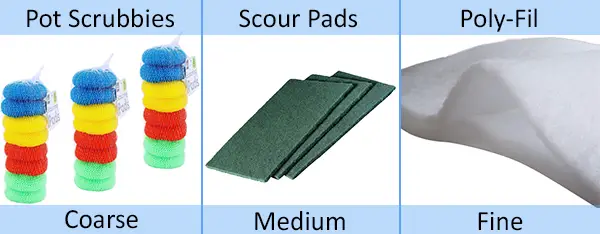
So, between pot scrubbies, scour pads, and poly-fil, you have coarse, medium, and fine mechanical filtration.
How Do I Know If I Don’t Have Enough Biological Filter Media?
Now, before we get the best biological filter medias on the market, let’s talk about if you need the stuff first! Because, while our love for our fish tempts us to buy the best, there’s a good chance you don’t really need the best.
Generally, the best biological filter medias have the highest surface area. It follows logic that the highest surface area houses the most beneficial bacteria.
Let’s make up some numbers to illustrate the point. Your filter has Filter Media A. Filter Media A has X surface area. You’re thinking about buying Filter Media B, because it has twice as much surface area!
Upgrading to Filter Media B seems like a no brainer? Not necessarily. Because Filter Media A could be processing all the ammonia with ease.
How do we know? Well, we test the water every now and then.
API’s master test kit is a must have. Use it to test your water for ammonia, nitrite, and nitrate. If you find ammonia or nitrite in your water—and your aquarium is mature and cycled—then it could be you need more surface area on your filter media.
So, the lesson is, don’t waste your money if your fish are healthy and the water tests come back fine!
Best Commercial Biological Filter Media
On the other hand, if you’re ready to buy and want the best for your fish, then check out the following list.
*NB The source for the surface area info for these bio medias comes from Frank’s Tanks on YouTube. Here is a link to the video in question. Check it out, give him a subscribe!
Biohome Filter Media
Biohome, in its various forms, is a very good sintered glass biological filtration media. It has a good surface area, as you’d expect. According to the aforementioned excellent Frank’s Tanks video, it has a surface area of 150k square foot per one cubic foot of volume!
However, one thing really makes Biohome stand out among its competitors.
You know the filtration paradigm: ammonia, to nitrite, to nitrate… and then, we water change to get the nitrates out! What makes biohome stand out, is that it claims to (eventually) cultivate anaerobic bacteria capable of consuming nitrates, too!
That is quite a claim! But, some users are finding the claim to be true!
Check out this excellent video from Aquarium Adventures (also, give him a sub). Over time, his tests show that, after adding Biohome, his nitrates did eventually start to fall!
Even if you doubt the claim that it can reduce nitrates, its massive surface area makes it an excellent filter media regardless! Check it out!
Eheim Substrat
According to Frank’s analysis, Substrat Pro might not have the highest surface area available; his research puts its surface area at 42.7k square feet per one cubic foot in volume.
But, nevertheless, it’s a longstanding favorite in the aquarium hobby. This is because, over decades, Eheim have deservedly earned a loyal following. Also, it is produced in Germany, which—owing to their reputation for excellent manufacturing/engineering—is very reassuring.
Seachem Matrix
Last, and certainly not least, is Seachem’s Matrix!
Following Frank’s numbers, we can see that Matrix comes in at a whopping 210k square feet of surface area per one cubic foot of volume!
Therefore, in terms of surface area, it stands out as the clear winner.
Best DIY Biological Filter Media
When you use something intended to be a bio media for an aquarium, it’s easy to find out its aquarium-relevant properties. Conversely, when you adopt a material intended for a different use, it’s not easy to know, for example, the surface area. So, the discussion of DIY bio media is less technical than the purpose made commercial alternatives.
Lava Rock
Lava rock is popular with aquarium hobbyists; it’s cheap and easy to come by.

While its bubbled structure means it has a larger surface area than most rock, in reality its surface area doesn’t compare well to commercial alternatives. Furthermore, it can clog with detritus so remember to rise off waste with dechlorinated water once in a while.
Gravel
If you have a gravel substrate in your aquarium, then it is helping with bio filtration. It might not be the largest surface area, but its more surface area than just a bare bottom.

So, in a pinch, if you have gravel laying around, it can be used for bio media. Not the best surface area though, but if you have no other choice it can help.
Growstones
In case you haven’t heard of growstones, they are made for use in hydroponic and aquaponic gardening systems.

They’re created from recycled glass, which is a bonus! Furthermore, they have a large surface area and are relatively affordable. Growstones are a favorite cheapo aquarium filter bio media!
Aquarium Filtration Tips, Tricks & Secrets (PLANTS!)
If you want a healthy, well-filtered aquarium, then there’s one thing you cannot overlook: plants. Having an aquarium with live, healthy, and growing plants can reduce the amount of nitrogen compounds in the water.
The faster a plant grows, the more it “cleans” the water. So, you’re looking for something fast growing. Some of my favorite fast growers include plants like hornwort and elodea.

Those plants, however, are limited in how fast they can grow by the amount of carbon dioxide in the water. So, naturally, their growth rates can’t compete with floating plants. This is because floating plants have direct access to the CO2 in the air! Duckweed can be difficult to get rid of, but it will grow fast and devour nitrate. If you’re afraid of duckweed taking over, consider alternatives like frogbit, water lettuce, and water hyacinth.
Some will even grow terrestrial plants rooted directly into the aquarium water. The classic example is the pothos. Aquarium hobbyists like to root pothos cuttings into their aquariums as a way of aiding with filtration.

NB* Regarding plants: a lot of fish eat them. For example, goldfish won’t hang around for your hornwort to grow; they’ll just eat it! So, before you go out and spend all your money on plants, find out if your fish are just going to eat them! Some plant species are unpalatable to fish. Safe bets include anubias species, java fern species, and java moss.
Furthermore, in order to grow plants require correct lighting and nutrient availability in the water. Although, the plants I’ve recommended in this article are all consider easy to grow and “low tech” plants. This means they don’t require expensive lighting or CO2 systems.
If you want to buy aquarium plants online, check out this article.
Rinsing Aquarium Filter Media
Throughout this piece, there is an emphasis on avoiding clogged filter media. The reason you don’t want clogged filter media is twofold. First of all, clogged filter media stops the water containing ammonia and nitrite from reaching bacteria. Secondly, clogged media can cause bacteria die off, and it reduces the media’s surface area.
The solution? Rinse your filter media off once in a while. It’s important not to use chlorinated tap water, because this will kill the bacteria. Instead, you can use your aquarium waste water as you drain it for a water change.
I’ll often drain a tank directly onto a garden to water the plants—they’ll love the nitrate rich water. Draining the water to the garden like that allows me to take a bucket of mucky filter media out to where the hose is draining. I can then rinse off the media in the waste water. So, not only do the plants get the benefit of the nitrogen in the water, they also get a little fertilizer from the detritus washed from the filter media into the garden soil.
Water Changes!
No matter how good your filtration is, never forget the role of water changes. In the aquarium hobby, you will encounter a breadth of opinions on how often water should be changed. But, remember that while dogmatism can attractive, the truth is in the water! If nitrates are high, if detritus has gotten unsightly, then it is unavoidable: time for a water change! No filter and no filter media can change that.
Futher Reading
- FX6 Vs. Eheim 2262
- Canister Filter Comparisons
- Filter Stopped Working? What To Do!
- Overstocked Aquarium? No Problem!

